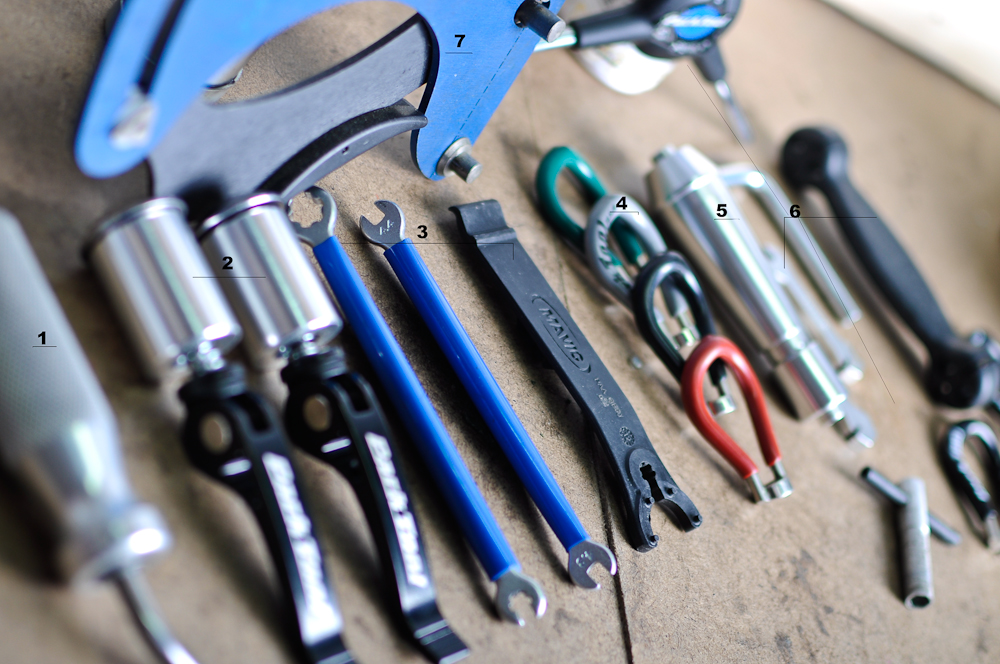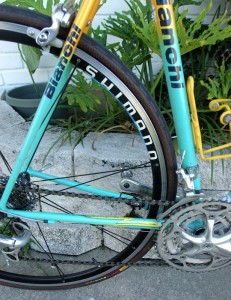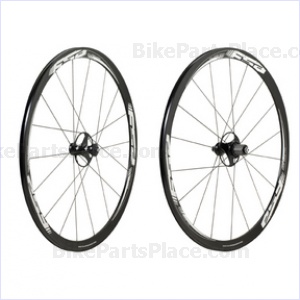Installment 2: Wheel Building Tools (Read Installment 1)
Wheel building is often described as an art, not a science. In part, the description is accurate because artisans were building excellent wheels which maximized the properties of available materials long before those properties could be quantified. Even now that companies can accurately measure the forces exerted on spokes, rims, and hubs, most attempts to re-engineer the wheel end with manufactures returning to traditional designs.
Shimano, for example, returned to traditional spoke patterns after a brief attempt to build wheels with paired spokes crossed to opposite sides of the rim. While I suspect the idea was to improve lateral stiffness by increasing the effective bracing angle of the spokes, the reduced spoke count and soft rim made for a notoriously “spongy” wheel.
FSA tried wheels with a third flange and a set of radial spokes. The center spokes were designed not for structural support, but for radial truing. Unfortunately, the design allowed a wheel to be built round, but with uneven spoke tension, leading to shortened spoke fatigue life.
While most of the radical changes in wheel design have faded into history, small improvement, mostly in the way spokes attach to rims and hubs, require the wheel builder to be supplied with an arsenal of tools:
- Nipple winder: Traditional tool used to quickly thread nipples onto spokes.
- Thru-axle adapter: Modern mountain bike wheels use large, removable “thru-axles.” “Thru-axles” reduce differential movement between dropouts on suspension forks and rear triangles. Adapters are needed to build and true thru-axle wheels which do not fit in traditional truing stands
- Mavic and Shimano spoke wrenches: Some Mavic and Shimano wheels use proprietary spoke nipples. Unlike traditional spoke wrenches, the the Shimano and Mavic wrenches intersect the rim at a 90 degree angle to accommodate placement of tools used to hold bladed spokes straight during building and truing.
- Traditional spoke wrenches f0r the most common size nipples: 3.2, 3.3, and 3.5mm. The grey wrench is for splined nipples made by DT swiss
- “Lefty” adapter: Cannondale makes suspension forks which only attach to the wheel on one side. These wheels don’t use a traditional axle and need an adapter to fit in a truing stand.
- Assorted spoke wrenches for adjusting internal nipples (nipples contained in the body of the rim) and tools for holding various gauges of bladed spoke so that they do not twist when tightened.
- Park TM-1 tension meter: Tension meters ensure spokes are tightened evenly to limits specified by rim, hub, and spoke manufacturers. While traditional builders brag of their ability to build wheels acoustically, using the relative pitch of each “plucked” spoke as a proxy for accurate tension measurement, in a modern shop, a well-calibrated tool is preferred over the mechanic’s intonation.


